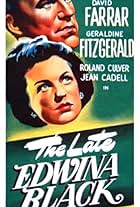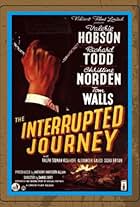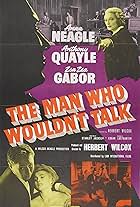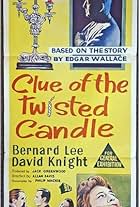When to women are brutally murdered, the local townsfolk quickly assume a strangely behaving young man is the culprit, but a policeman thinks otherwise.When to women are brutally murdered, the local townsfolk quickly assume a strangely behaving young man is the culprit, but a policeman thinks otherwise.When to women are brutally murdered, the local townsfolk quickly assume a strangely behaving young man is the culprit, but a policeman thinks otherwise.
Photos
Margaret St. Barbe West
- Mrs. Willis
- (as Margaret St. Barbe-West)
Kenneth Midwood
- Sergeant Brigs
- (as Ken Midwood)
Maggie Rennie
- Alice
- (as Margaret McGrath)
Eileen Harvey
- Woman in Pub
- (uncredited)
Lindsay Hooper
- Man in Cafe
- (uncredited)
- …
Storyline
Did you know
- ConnectionsEdited into The Edgar Wallace Mystery Theatre: Urge to Kill (1959)
Featured review
The Edgar Wallace Mysteries were a 46 film series made by Merton Park Productions. They concluded in 1965, with "Dead Man's Chest", and began here with "Urge to Kill" five years earlier.
Or did they?
"Urge To Kill" lacks the revolving bust opening titles of the Edgar Wallace series. Also, it isn't based on anything that Wallace wrote. Despite it being listed on IMDb as the first film of the series, it was probably only retitled as "Edgar Wallace Mysteries: Urge To Kill" for the USA and wasn't part of the series at all.
No matter. A lunatic is running amok in what looks like a particularly grim small town. No green hills in these parts, as someone remarks even though I watched a green tinted version of this film, which makes everyone look a bit sicklier than they no doubt were. There's a small town mentally to many of the villagers, or towners, in the shape of some large talk down The Anchor (that's a pub) of mobbing up and sorting out Hughie (Terence Knapp), the educationally subnormal young man (or "mental case" as the Police refer to him charming!) who lives with his Auntie, Auntie B (Ruth Denning) the landlady of a modest boarding house. Huey likes roaming round by the docks and derelict sites to find "pretty bits like flowers" pieces of old broken bottles and such. Some local Judy will be bumped off and Huey will arrive home soaking wet or covered in mud. Other suspects emerge in the form of Auntie B's boarders: kindly (or is that cowardly?) Mr Forsythe (Wilfrid Brambell, yes, that one) who has a habit of quoting the Bible - and Charlie Ramskill (now there's a clue) played by Howard Pays as an unctuous sales rep who's outward confidence masks an alarming inadequacy with the ladies. Oh and there's Mrs Willis (Anna Turner) who likes to pop in with her glad tidings. Mrs Willis sounds like one of those TS Eliot women from the Wasteland: "Have you seen the paper? Have you seen it? It's Jenny. You know: Curly's daughter. Got herself done in. Strangulated. Here! See for yourself! Murdered and gashed! Gave me quite a turn. I wouldn't say no to a cup of tea."
It all adds up to something less than a mystery as it's pretty quickly revealed who the real madman is.
Unusual for the era for the way it places a erm - murdering lunatic in an everyday setting - rather than the Grand Guignol mannered style of horror films "Urge To Kill" came bang in the middle of Merton Park's heyday when they chugged along at the rate of one feature per month - before tailing off into TV production by the late 60s.
"Urge To Kill" runs contrary to the usual second features of the time, Butchers' productions of feeble glamour in London apartments/ nightspots for example, and outwardly has more in common with early Coronation Street. Merton Park Productions, who had their studios opposite erm Merton Park in London, were notorious for using locations in and around SW19 in order to keep their production costs down. This one is all quite studio bound; most of it set round the kitchen table. The writers presumably imagined that they were creating quirky, eccentric characters but very little about "Urge To Kill" rises above its mundane setting.
Or did they?
"Urge To Kill" lacks the revolving bust opening titles of the Edgar Wallace series. Also, it isn't based on anything that Wallace wrote. Despite it being listed on IMDb as the first film of the series, it was probably only retitled as "Edgar Wallace Mysteries: Urge To Kill" for the USA and wasn't part of the series at all.
No matter. A lunatic is running amok in what looks like a particularly grim small town. No green hills in these parts, as someone remarks even though I watched a green tinted version of this film, which makes everyone look a bit sicklier than they no doubt were. There's a small town mentally to many of the villagers, or towners, in the shape of some large talk down The Anchor (that's a pub) of mobbing up and sorting out Hughie (Terence Knapp), the educationally subnormal young man (or "mental case" as the Police refer to him charming!) who lives with his Auntie, Auntie B (Ruth Denning) the landlady of a modest boarding house. Huey likes roaming round by the docks and derelict sites to find "pretty bits like flowers" pieces of old broken bottles and such. Some local Judy will be bumped off and Huey will arrive home soaking wet or covered in mud. Other suspects emerge in the form of Auntie B's boarders: kindly (or is that cowardly?) Mr Forsythe (Wilfrid Brambell, yes, that one) who has a habit of quoting the Bible - and Charlie Ramskill (now there's a clue) played by Howard Pays as an unctuous sales rep who's outward confidence masks an alarming inadequacy with the ladies. Oh and there's Mrs Willis (Anna Turner) who likes to pop in with her glad tidings. Mrs Willis sounds like one of those TS Eliot women from the Wasteland: "Have you seen the paper? Have you seen it? It's Jenny. You know: Curly's daughter. Got herself done in. Strangulated. Here! See for yourself! Murdered and gashed! Gave me quite a turn. I wouldn't say no to a cup of tea."
It all adds up to something less than a mystery as it's pretty quickly revealed who the real madman is.
Unusual for the era for the way it places a erm - murdering lunatic in an everyday setting - rather than the Grand Guignol mannered style of horror films "Urge To Kill" came bang in the middle of Merton Park's heyday when they chugged along at the rate of one feature per month - before tailing off into TV production by the late 60s.
"Urge To Kill" runs contrary to the usual second features of the time, Butchers' productions of feeble glamour in London apartments/ nightspots for example, and outwardly has more in common with early Coronation Street. Merton Park Productions, who had their studios opposite erm Merton Park in London, were notorious for using locations in and around SW19 in order to keep their production costs down. This one is all quite studio bound; most of it set round the kitchen table. The writers presumably imagined that they were creating quirky, eccentric characters but very little about "Urge To Kill" rises above its mundane setting.
- fillherupjacko
- Mar 7, 2007
- Permalink
Details
- Runtime59 minutes
- Color
- Sound mix
- Aspect ratio
- 1.37 : 1
Contribute to this page
Suggest an edit or add missing content





















